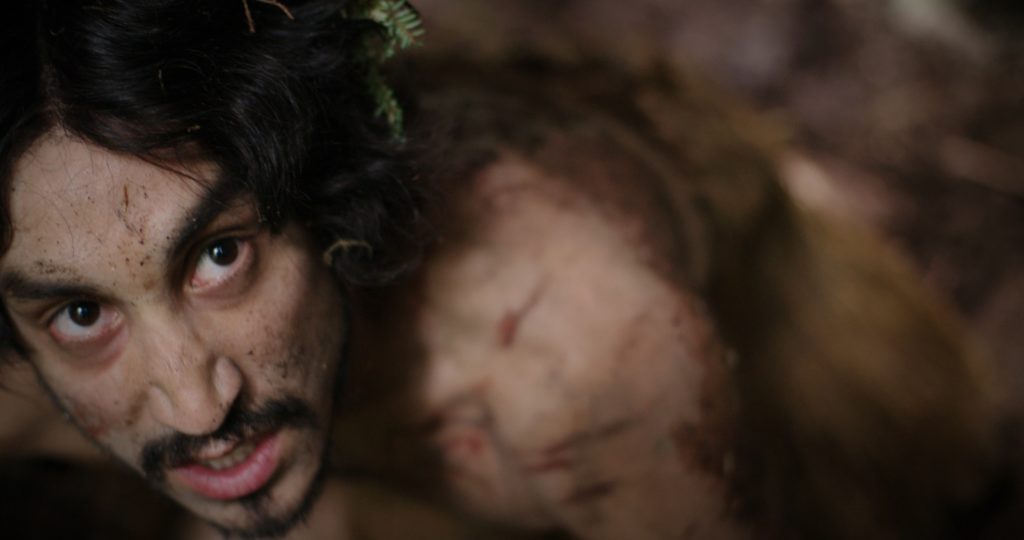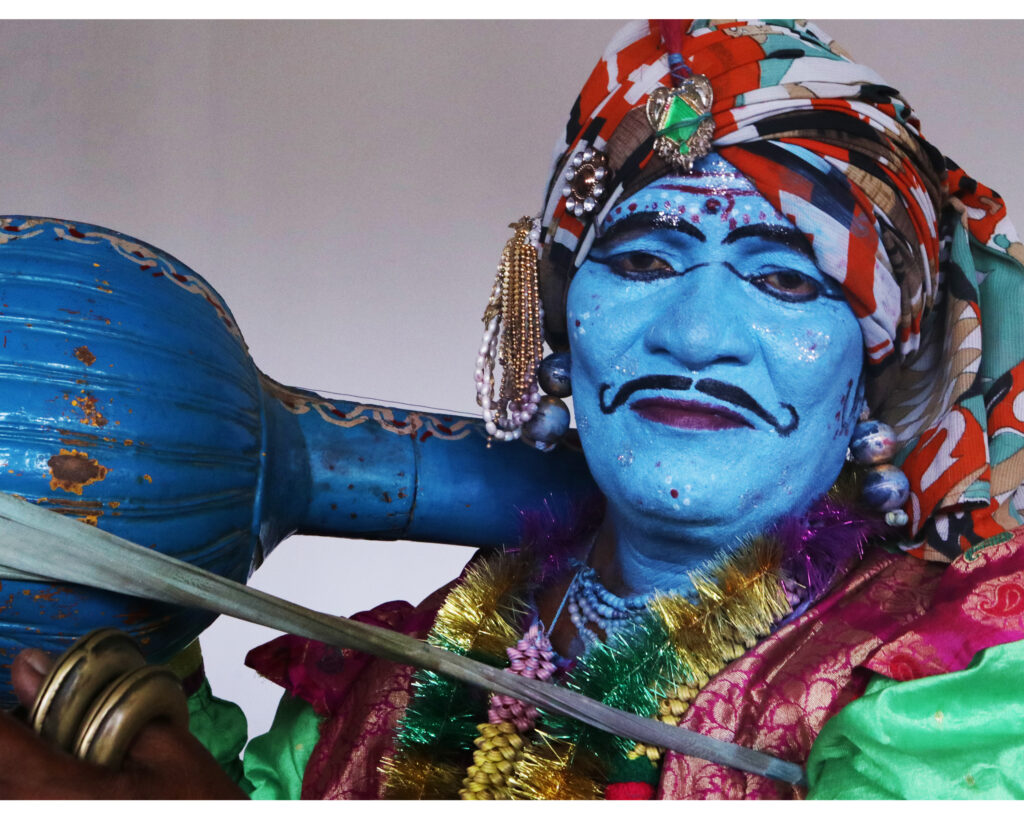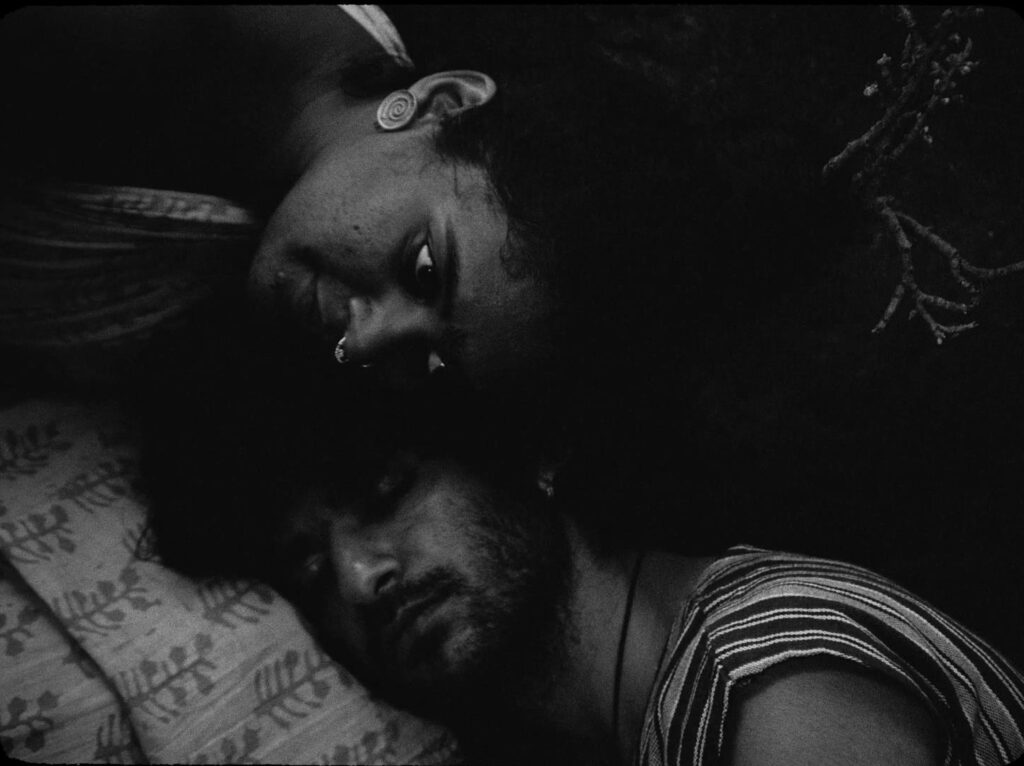Oral storytelling traditions – whether manifesting through speech or song, through myth, folk tales, ballads, chants, prose or verse – can be a rich resource for filmmakers. Several films at this year’s RAI Film Festival demonstrate the powerful result when oral traditions and cinema interact. Festival Reporter Kathryn Case recommends three to watch.
Edge of the Knife

What’s it about?
The Haida reside on an archipelago off the coast of western Canada and Alaska. Edge of the Knife is based on Haida oral storytelling and mythology, and told in the Haida language. Set in the 19th century, in a seasonal fishing camp, it revolves around the tumultuous relationship between two noblemen, Adiits’ii and his best friend Kwa, as by grief and a thirst for revenge pits them against each other.
Who made it?
The film is co-directed by First Nations filmmakers Gwaai Edenshaw and Helen Haig-Brown. Edenshaw used his personal experiences being raised on Haida Gwaii to weave together the story, in collaboration with Tsilhqot’in filmmaker Haig-Brown. This is Edenshaw’s first film (before now he has received acclaim as artist and jewellery make), whilst Haig-Brown has a number of filmmaking credits under her belt.
What’s special about it?
Edge of the Knife is the first feature film in the endangered Haida language – there are only a handful of native speakers left. Having survived decades of hardship and cultural genocide, Haida today are reclaiming their language with hard work and dedication – and this film is part of thriving cultural and language revitalisation programme. The directors consulted with fluent speakers who carefully translated the script into three Haida dialects, and trained the fully-Haida cast to memorize, pronounce, and express their lines authentically.
In the UN Year of Indigenous languages, we are delighted that Edge of the Knife is our Opening Night Film. It is also the recipient of the 2019 Presidents Medal.
Opening Night screening of Edge of the Knife will take place Wednesday 27 March at 18:00 at Watershed, Bristol. Buy tickets here.
Resonating BurrA – THE STORY OF BURRAKATHA

What’s it about?
Director Arjun Chavah explores Burrakatha, a storytelling art form in the Telangana and Andhra regions of India that emerged in the context of the Indian independence movement.
What’s special about it?
Emerging in the 1940s, amidst the struggle against feudal oppression and the Indian freedom movement, Burrakatha was a medium for dissent. It continued to be used to speak about other social issues after independence, but eventually diminished.
Chavah uses Burrakatha as a narrator to fill in pieces of Telangana’s history, and to celebrate the power of art as a means of dissent. Whilst Burrakatha may have fallen out of favour, it carries on a vibrant tradition that still resonates in contemporary India. This film celebrates the lively and comedic spirit of Burrakatha.
Resonating Burra screens in a double bill with Sakhisona on Friday 29th March at 13:15 at Watershed. Buy tickets here.
Sakhisona

What’s it about?
Sakhisona records the stories that are sung around a mound in near Mogulmari in West Bengal. The mound, known locally as Sakhisona, has served as an object of mythology and storytelling for centuries. Stories about it are interwoven with myth and still sung by local musicians.
Who made it?
Prantik Basu is an alumnus of Film Directing at the Film and Television Institute of India and has gone on to direct several short films which have been screened at various international film festivals. He has already been awarded a Tiger Award for Short Films at IFFR 2017 for Sakhisona. His interest in creating Sakhisona spawned from a love of storytelling, as he worked as an illustrator in a Bengali children’s magazine before moving on to filmmaking.
What’s special about it?
According to Basu, the importance of storytelling and mythology is vital: “It is an access to the anecdotal history, and in turn, the ethos of a community. For me, the tale of Sakhisona, though primitive, seemed extremely contemporary and progressive in nature.” This highly evocative film re-enacts the folklore of the place in fragments woven around the archaeology and objects unearthed. In this film, we see Basu’s stylistic flair emerge with skilful use of black and white cinematography.
Sakhisona screens in a double bill with Resonating Burra on Friday 29th March at 13:15 at Watershed. Buy tickets here.
You can access to these films, as well as all other screenings, events and conference sessions at the RAI Film Festival with a Festival Pass. Buy yours today!